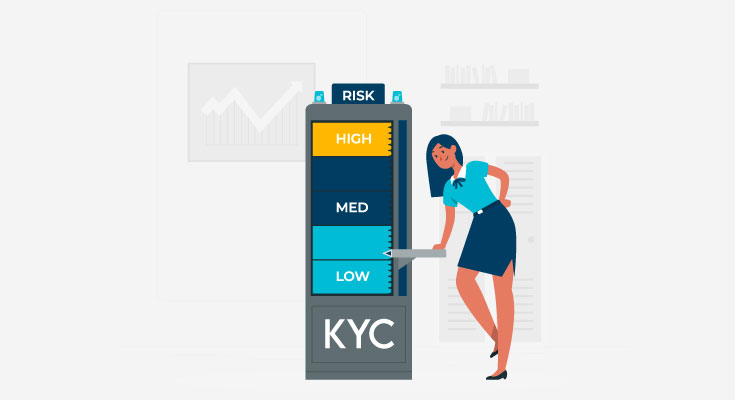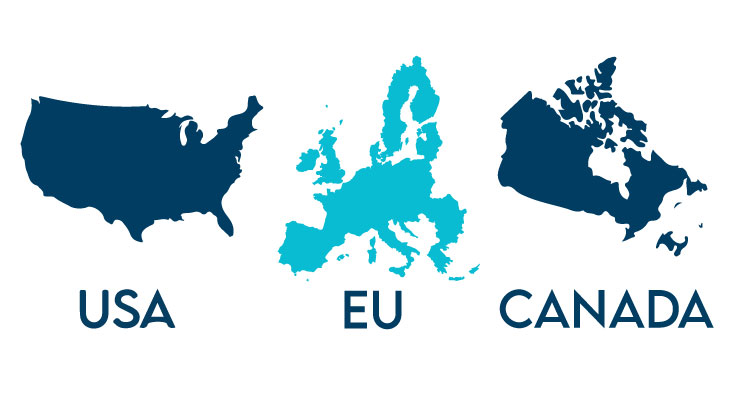When onboarding new customers, financial institutions must balance the need to mitigate risk with the necessity to keep the customer experience frictionless. To that end, AML/KYC risk assessment is critical for onboarding new customers. Indeed, financial institutions are under increasing pressure to meet regulatory standards while making the customer onboarding process frictionless. The combination of digital and mobile technologies makes it easier than ever for customers to open new accounts.
As a result, financial institutions must maintain strict Know Your Customer (KYC) and Anti-Money Laundering (AML) standards while streamlining the onboarding process for new customers. In this article, we’ll explore different onboarding methods and how they impact your institution’s KYC/AML risk assessment.
What is AML/KYC Risk Assessment?
KYC/AML is an acronym standing for “Know Your Customer” and “Anti-Money Laundering.” These are compliance regulations that require financial institutions to verify the identity of their clients. This is done to prevent money laundering and other financial crimes. KYC is a procedure that requires financial institutions to collect and verify information about their customers. This data is then documented in an effort to prevent money laundering and terrorist financing.
KYC regulations are designed to strengthen the integrity of the financial sector and the wider economy by reducing crime and increasing trust. AML refers to the regulations that govern financial institutions’ due diligence when determining the source of their customers’ funds. For example, financial institutions must verify the source of funds deposited in accounts by customers who are opening new accounts. This is done to prevent money laundering.
Digital Customer Onboarding Methods
Digital onboarding methods are low-touch and mostly occur online. They include onboarding methods such as e-KYC, SMS verification, and OTP verification. E-KYC is the process of onboarding new customers digitally by collecting and verifying their identity and other relevant information. E-KYC uses the government-issued Unique Identification Number (UID) issued by the Indian government.
Once verified, the e-KYC process provides an electronic validation of the customer’s identity. This electronic verification is stored in an electronic format and is used to onboard new customers, transfer funds, and open new bank accounts.
E-KYC is the most common digital onboarding method. It is used by banks across the world to onboard new customers. SMS verification is a low-touch onboarding method that telecom companies commonly use to onboard new customers.
Manual KYC/AML Risk Assessment
Manual AML/KYC risk assessment is a low-to-moderate touch method that relies on a combination of digital and manual methods. It is an onboarding method that requires an initial review of customer information and documents that is followed by a final review of all customer information and documentation.
A manual review is necessary in order to accurately complete KYC/AML compliance. Manual KYC/AML risk assessment is the most common onboarding method. It is used by large money transfer companies and financial institutions that have large volumes of new customers. Manual AML/KYC risk assessment is conducted by an employee and typically involves reviewing documents such as passports, utility bills, and letters of employment.
This method is necessary to complete the full KYC/AML compliance for customers. Manual KYC/AML risk assessment is the traditional way that financial institutions onboard customers. It is done by reviewing customer information and documents by an employee. This process is necessary to complete the full AML/KYC compliance for customers.
Computerized AML/KYC Risk Assessment
Computerized KYC/AML risk assessment is a high-touch method that involves the use of technology to onboard customers. It is an onboarding method that uses technology to identify and verify customer information and documents. This onboarding method is often used by large financial institutions with high volumes of new customers.
Computerized KYC/AML risk assessment is done by an online system that uses algorithms to screen and filter documents. The system uses algorithms to identify common information found in identity documents such as passport numbers, birth dates, and driver’s license numbers. This onboarding method uses preloaded customer information to verify identity and collect the necessary information.
Computerized AML/KYC risk assessment is a high-touch onboarding method that relies on technology to collect customer information and verify identity. This method is necessary to complete the full KYC/AML compliance for customers. This method is used by large financial institutions. It is the most efficient way to onboard new customers.
Combination of Digital and Manual AML/KYC Risk Assessment
Co-editing is a high-touch method that uses both digital and manual methods to collect and verify customer information and documents. This onboarding method uses both technology and employees to collect and verify customer information and documents. Co-editing is a manual onboarding method that relies on employees to verify customer information and documents.
It also uses software to filter information and documents. Manual KYC/AML risk assessment is the most common onboarding method. It is done by an employee and typically involves reviewing documents such as passports, utility bills, and letters of employment. This method is necessary to complete the full AML/KYC compliance for customers. Co-editing is the most efficient way to onboard new customers.
Conclusion
KYC/AML risk assessment is critical for onboarding new customers. When onboarding new customers, financial institutions must balance the need to mitigate risk with the necessity to keep the customer experience frictionless.
To that end, AML and KYC risk assessment is critical for onboarding new customers. Indeed, financial institutions are under increasing pressure to meet regulatory standards while making the customer onboarding process frictionless. The combination of digital and mobile technologies makes it easier than ever for customers to open new accounts. As a result, financial institutions must maintain strict KYC and AML standards while streamlining the onboarding process for new customers.









